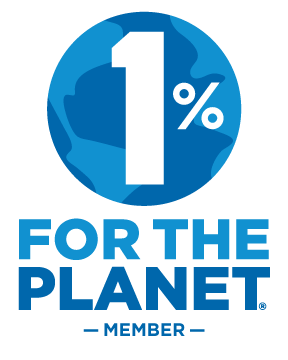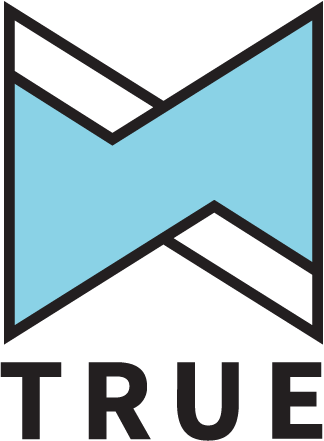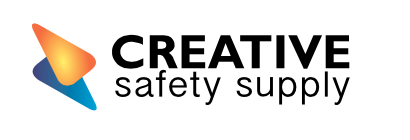
Lean Six Sigma Certification Coaching with a Master Black Belt
I often get questions about what it means to get coaching help on a Lean or Six Sigma certification. This is often done after completing a training course, when the student wants to apply what they learn to a real problem, and earn an official certification.
I spent about 15 years mentoring and coaching Lean and Six Sigma practitioners in the corporate world, but I didn’t keep track of the number of people.
Since leaving my corporate job at starting BPI, I have certified a significant number of people as Lean Agents, Green Belt and Black Belts
Check out this video below to learn more about the coaching and mentoring experience.

If you would like coaching help with your certification, check out available virtual group coaching dates.
Transcript from video above
Hi, this is Brion. I wanted to talk to you today about certifications. If you signed up for a classroom course or an online course, one of the options is to go through and complete a certification, whether that’s for Six Sigma, like a Green Belt, a Black Belt, or a Master Black Belt, or whether it’s a Lean certification.
The important part of certification is really the application to a real-world example. That’s why I highly encourage you to try to pursue and take that option. It also is the ability for you to really learn the material by practicing in something that is happening in real life, whether that’s at your home, whether it’s at a nonprofit you work with. The easiest is probably at work where you’re getting paid and you’re trying to take the training that you’ve gone through and apply it to something at your work where you can reap the benefits of the investment in the training.
Certifications aren’t the most important thing for those of us in the process improvement world, but it definitely gives an indicator of how much training you’ve taken and some of the applications you’ve gone through. I would say that the project experience or real-life experience is the most important thing for us in process improvement, but it does give you an indication that you have achieved a certain level. I’ve seen a lot of resumes that just show that people have taken a certain class but I don’t know if they were paying attention or got anything out of that class.
If you sign up for the certification, you’ll go through is a training course online and when you complete that, you’ll have, hopefully, some ideas that are generating in your head about where you can apply these concepts and tools to a real-life project. You’ll be asked to reach out and say, “I’m ready for support,” and someone like myself will be assigned to you. Usually, what I like to do is have a quick call with that person or a quick email exchange to find out what are you thinking? what kind of work are you doing? Do you have some projects in mind already? Have you already started? What kind of experience do you have in process improvement? what’s your structure of your work? Is your work doing this? Are they supporting this? are you trying to figure out how to work this into your regular job? just giving me a little background on your situation.
I also just want to get to know you, find out what you’re looking to do in the future. Is this something you’re going to go into as a career? Maybe re you going to go into process improvement in the future or you want to develop and move into that kind of a role. Or is this just a one-off project that you’re going to do and you want to continue to have that skill set? or you’re trying to boost your resume and show that you are contributing directly to the business and the organization and having a positive impact.
If you haven’t thought through different projects, then that’ll be something we’ll go through. I’ll have you explain the process you have at work, what you’re doing, what your job function is, and then I’ll talk through maybe different opportunities that I might think about or, back-and-forth, we’ll come up with some different ideas. I usually start off by asking about the work that they do and ask about the quality of that work and how do you know that the work you’re doing has high-quality. Do you have a customer? who is that customer and what do they think? What’s the feedback?
I’ll next ask about how long that process takes from the time you start to when you finish. Is it a five-minute process? twenty minutes? three hours? six days? four months? And get a sense for the duration of time that work takes. From there, we can talk about WASTE, inefficiencies, problems in that process, and how you can do a project.
I really encourage you to pick a project that is based on work that you actually do. It’s really hard when you try to go to another department or another area and help them with a problem because you’ve got your regular job, potentially, and now you’re going to have to find some free time to go help another group. It’s just not going to directly impact you and it might be above and beyond what your current role is. So I really highly encourage people to find something that is part of their current roles and responsibilities.
Usually, the calls we have, if it’s a phone call, it may only be 15 minutes and we can make a lot of progress in that time. Most of the certification programs offer two to three hours of support and that’s just a guide. I’m going to cut you off at three hours and say, “You’re out of time. Good luck.” But on average, it turns out to be about two or three hours per person. We can do various short segments of calls, just have a quick question, we can jump on a call real quick. You can email me information, I can look over a file, I can look over a presentation and give you feedback. That only takes a few minutes at a time. There’s a lot of work that can be done in just a couple of hours, especially if it’s spread out throughout your project.
Again, when we’re talking about projects, I’m talking about a long-term initiative, which could be from a Lean side, will be maybe a series of kaizen events or improvement events, and on the Six Sigma side, it would be going through the DMAIC project model.
We recommend that you try to complete your project within six months of the end of the training. That isn’t a hard deadline as well, but we know, from experience, that the people that don’t get started within those first six months really struggle to get a project done at all. That’s because, as you move along, your training is starting to become distant, you’ve forgotten some of the concepts, you start to lose confidence in applying what you learned. Whereas right after the class, it’s fresh in your mind, you’re excited, and that’s when we want to jump on these projects. You also get back into your old routines again very quickly and so the quicker you can jump into a project and define it and get it going, the better.
When I do the classroom training of the course, especially like the Green Belt or Black Belt where we have two weeks separated by a couple of weeks in between, then we talk a lot about coming to the second week of training with a project already in mind. That’s the intent is to try to use as many of the exercises that we go through with that project or at least when you’re leaving the class, at the very last day, you’ve got a good handle and good thought around what project might be working on.
Like I said, if you already have made some progress on the project, then usually people will send me a PDF or a PowerPoint slide deck and I’ll start to look through it and just make sure that all the elements are there and that it makes logical sense on how you took a problem and worked it through and how you arrived at your solution makes sense. It doesn’t look like there’s a big jump from problem to, magically, there’s some solution there. It should flow nicely so that I see, step-by-step, how you arrived at that solution.
Then, at the end, also going back and saying how do I know that this has worked? so there’s some data that says we used to get this level and now we’re either better or lower, whatever is better, and that’s tangible that we can show that the numbers have gotten better. Some people will try to calculate cost savings, that’s great if you can do that, or cost avoidance or some kind of soft savings. That’s not required, but it is nice if you can tie it back to the money. A lot of organizations are really focused on is dollars or whatever monetary system is in your country, so, if at all possible, you try to quantify the impact as well. Not just that the metric got better, such as yield or percent complete and accurate, or turnaround time, or response time, or cycle time, but what does that mean in terms of impact to the business.
When I’m working with somebody, I’ll give them multiple ways in which to contact me. I have a calendar that I make available that’s just an app that you can go on and see my availability. That seems to be the easiest way instead of a bunch of back-and-forth and overprocessing and extra processing of trying to figure out a time when we’re both available. I just say, “Here’s my open spots on my calendar. You pick a time,” and we know that’ll work. I’ll provide that link to anyone who’s working with me directly.
I also give out my phone number and I use things like WhatsApp and Skype for international people outside of the US to make it easier to contact and connect, which is great nowadays that we can reach anybody in the world, basically. And then I also, for people who can reach me by text or even through Whatsapp, we can have quick questions and say, “I’ve got a quick question. Can you jump on a call real quick?” and I’m happy to say, “Yeah, give me a couple of minutes and I’ll be ready,” or, “How about an hour from now?” That works for me as well. I want to be responsive.
For emails that come in, I try to get those within 24 hours. Sometimes, based on my schedule, it’s hard and it might be two days before I get back to you, but I definitely will respond to all of the emails at some point, depending on what you’re asking, too. If someone’s saying, “Here’s my whole project. Can you review it?” I’m going to try to block off some time, maybe in a day or two, to do that. If it’s just a quick question on something, I can usually get to that much quicker.
I would recommend, as you’re going through your project, to start to populate a PowerPoint slide deck or a Word document with the analysis that you’re doing. Sometimes the analysis or the charts or the tool that you’re applying may not end up being applicable or helpful, but you still want to document that you’re doing it. Some people forget to put in some of the analysis they do that shows there is no correlation or impact of that particular metric or that category. That’s good to show as well. It doesn’t always have to be just the things that are good, it could also show I looked at this type of analysis and it didn’t tell me anything or it proved that that wasn’t important or that the change we made didn’t actually work. That’s good to show as well.
Keep a log of all the things you’re doing so that you have, I usually recommend, three or four different versions of the presentation. The first one is going to be where you keep everything you do and you’re going to pull from that and pull out key slides and information to put into the second version, which will be maybe what you submit for certification, which is going to be pretty detailed because you’ll want to show proficiency of the topics we’ve covered in the class. The other version will be maybe a condensed one for your team where you take out maybe some of the details, but it might be something you present, like a 30-minute or maybe even hour-long presentation, but you might not put every analysis in there and every detail. And then maybe a fourth one will be like an executive review where you got 5 or 10 minutes to go over your project. That might be in the format of a one-page slide, A3 format, or maybe five slides, total, where you flip through some of the key elements of that project.
Once you’ve got your project going pretty well, then it’ll be back-and-forth, usually by email. After that point, there may be some follow-up calls. Basically, I’ll look through what you send and I’ll put in the email, “Slide 14, I have a question about this. Slide 21, can you clarify that a little bit more? slide 18, I don’t understand what that chart is showing. Can you explain that a little bit more in detail?” And then if there’s a bunch of questions that are confusing, then maybe we’ll jump on a call and try to clarify that or just the back and forth on email seems to work. You’ll make some revisions and send me a new version and I’ll say, “Yeah, that looks good, that looks good. As I was going through, I noticed something else.”
But once we get done with all that, then we’ll have a basis to say, “Yeah, this looks good. I think you’re ready to go.” I will tell you you got certified. There’s no other review process; it’s basically me, as the mentor, saying it looks good and then I forward it on to get the formal certification. That’ll be sent out usually either a paper format, if you want that and you’re based in the US. If it’s international, I think we mainly do digital certifications for that. You’ll get a digital file and then you can print that out locally.
I got some questions, too, about the requirements for certification. Basically, the three main ones are going to be the Lean certification, the Green Belt certification, and the Black Belt. The Lean certification is going to be about applying Lean concepts to a problem and is probably going to follow maybe the DMAIC model or you can use the Plan, Do, Check, Act model. We won’t expect as much data analysis, but we do expect more photos and visuals of what you’ve done in the process. So the 5S, the visual management, kanban systems. Those type of things are going to be more important. Standard work, line balancing. That can be shown in more pictorial formats.
For the Green Belt, we’re looking for an improvement, so taking a metric from some level to an improved level. That can be done through the DMAIC model and we’ll look for specific artifacts in there and you’ll get a list of those artifacts. We’ll want to see the cause and effect matrix and the FMEA and some data analysis and some before and after data results, control plan, stuff like that.
Black Belt, the main difference is when to be the expectation for the use of the tools is going to be higher. Since you’ve learned more tools, we expect that the analysis is going to be a little bit more complex than we might see in a Green Belt project. Some people are interested in eventually doing Black Belt and they’ll pick a project and, if it’s a project that has a lot of opportunities that would qualify for a Black Belt project, some people will go through the Green Belt training, start their project, and then they like it and they’ll move on to the Black Belt training and they’ll end up just using that project for their Black Belt certification.
You don’t have to do a Green Belt certification and then a Black Belt certification if your project is not just some simple project but has a little bit of complexity to it. You could just apply that directly to there. But if you do a Green Belt and then do a Green Belt certification, then we would expect you to do a different project for your Black Belt because you’ve already used that project for certification. But that’s another question that comes up is peopled ask do I have to do the Green Belt first? No, you can go directly to Black Belt, but just know that the project will have to be a little bit more complicated or more challenging than a Green Belt project would be.
I hope that gives you some ideas on how the certification process goes. Please reach out if you have any questions. I’m literally looking forward to hearing about the work you’re doing and trying to help you make some real-world improvements. I think you’ll find that once you make an improvement, it really springboards your excitement for process improvement and you’ll want to do more and more projects. That’s ultimately what we want to see is this certification program is your first step and what will be a series of many, many projects in the future.
I like to tell people that you should have one improvement project going on at least at all times once you’ve gone through and become certified. Unfortunately, there’s a lot of people that have gone through training and never applied what they learned and gotten certified. I’ve also talked to a lot of people who’ve been certified and then they’ve never applied it beyond that certification project. That’s really disappointing because we really need people out there helping to solve some of these challenges that businesses and nonprofits and government agencies are having, so we need that skill set out in the world.
Good luck and maybe we’ll end up talking and I can help you on a future project. Thanks.




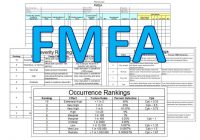



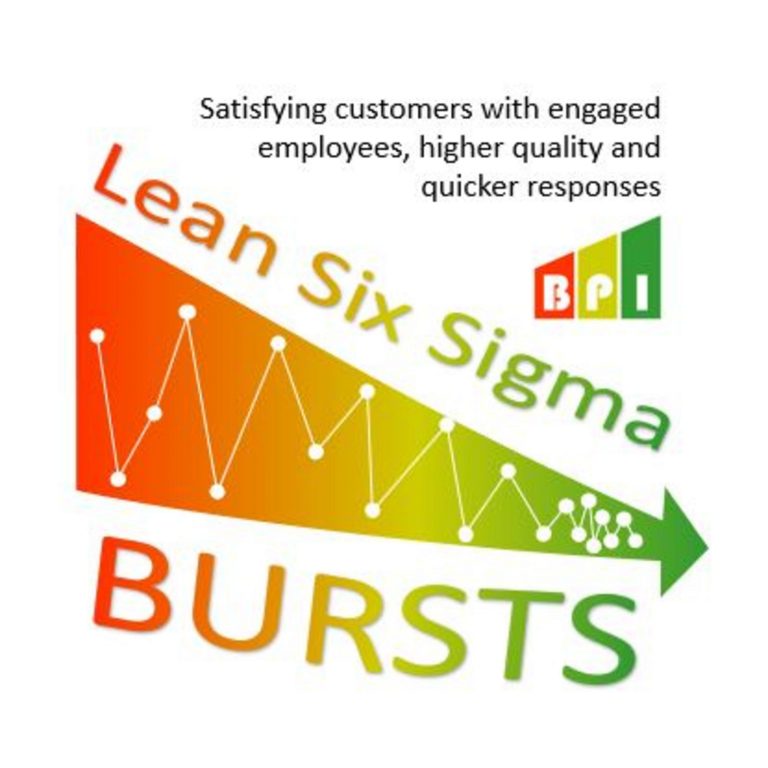


 Lean Six Sigma Bursts
Lean Six Sigma Bursts


